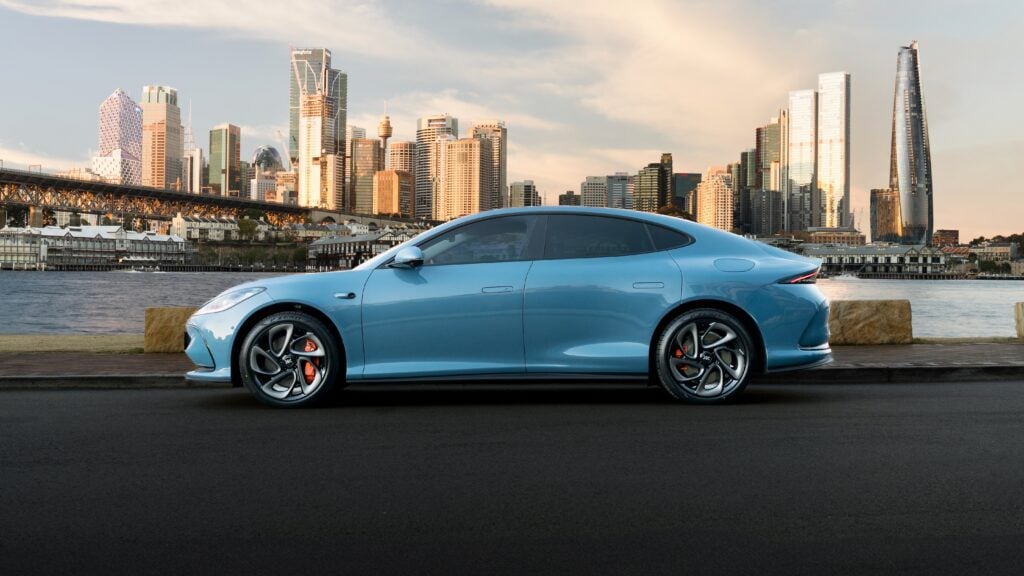
Kids are always begging to sit in the front seat. The cockpit’s more exciting, right? And no one wants to be squashed between annoying siblings.
Most parents are confused about current regulations. As a mother of a 9-year-old daughter I’m guilty of this. Isn’t 7 — or something — the magic number when kids can move out of child restraints? My daughter can sit in the front seat now, can’t she?
Even if parents have a vague idea about the laws, they often give in to pester power; children complain they’ve outgrown their ‘baby’ seat and beg to sit in the front of the car. Too often, busy mums and dads — juggling shopping, school bags and other kids — acquiesce.
However there are national laws regarding carrying your precious cargo. These are set out by the National Transport Commission (NTC) which maintains the Australian Road Rules (ARRs). The thing is, each state and territory has adapted the rules to meet individual requirements, resulting in slight variations across borders. For that reason it’s best to check your local rules in the links below. As a general guide, however, here are the rules as set out by the NTC:
Children under 6 months
Babies up to the age of 6 months must be restrained in an approved rearward-facing restraint. The restraint is held in place by the seatbelt and the top tether strap, and incorporates an inbuilt six-point harness system.
Children aged 6 months to 4 years
If the passenger is 6 months old or older, but is less than 4 years old, he or she must be restrained in a suitable and properly fastened and adjusted:
- Rearward facing approved child restraint; or
- Forward facing approved child restraint that has an inbuilt harness.
6 months – 4 years: Front or back seat?
Children under the age of 4 years must only travel in the back seat of a vehicle.
Children aged between 4-7 years
If the passenger is 4 years old or older, but is less than 7 years old, he or she must:
- Be restrained in a suitable and properly fastened and adjusted forward facing approved child restraint that has an inbuilt harness; or
- Be placed on a properly positioned approved booster seat and be restrained by either a suitable lap and sash type approved seatbelt that is properly adjusted and fastened, or by a suitable approved child safety harness that is properly adjusted and fastened
4-7 years: Front or back seat?
A passenger who is 4 years old or older, but is less than 7 years old, must not be in the front row of a motor vehicle that has 2 or more rows of seats unless in the row or rows behind the front row:
- All of the other seats are occupied by passengers who are also less than 7 years old; or
- There is no empty seating position in which the passenger can sit in accordance with this rule.
Children aged between 7-16 years
Children aged over 7 years must use either:
- A booster seat; or
- An adult seat belt.
Children aged 7 years and over can travel in the front seat. However, research shows that children under 12 years are much safer travelling in the back seat.
As mentioned, some states have made amendments to the national laws. For example, Victoria, News South Wales and South Australia no longer consider age ‘7’ the magic number to take a child out of a child restraint. Because children come in all shapes, sizes and heights, these states recommend children stay in booster seats until they are 145cm tall.
This is because an adult lap-sash seat belt is designed for people with a minimum height of 145 cm. Research shows adult seatbelts only start to fit people properly when they reach this height. That’s when a seatbelt sits across the strongest bones of the body.
Children who are not tall enough to use an adult seat belt can slump into their seat. The lap part of the seat belt is then too high on their stomach which causes more serious injuries in a crash.
145cm is taller than you think; most children don’t reach this height until they are aged ten to twelve.
Parents can probably hear the howls of protest from their young ones. There’s always a temptation to give in to badgering kids. But if you do have an accident, you don’t want to regret the decision you made immediately before that: The decision to let your child ride in the front seat or go without their booster that day.
To see the specific rules for your state or territory, follow the links below:



